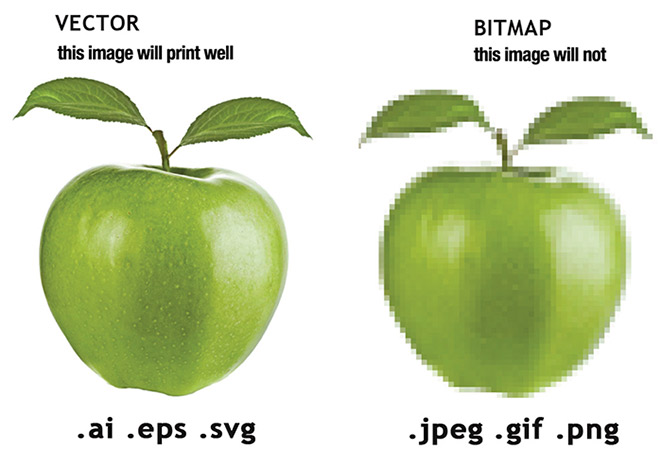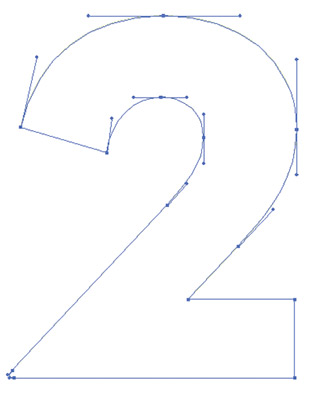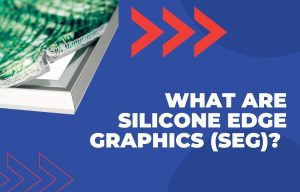In this guide, we will cover everything you need to know about vector artwork. You may be asked to supply this when ordering a large format print or graphic. We will also cover the difference between vector and raster (bitmap) artwork, the two most common formats used for visuals. If you’ve not encountered these terms before it can be a confusing subject. This short guide is a great starting point to make it easier for you.
What Is Vector Art?
When it comes to large format printing, small images often need to be enlarged and you will be asked to provide vector artwork. Vector artwork is also required for computer-cut vinyl lettering and logos that you might stick to a van or a window.
Vector artwork: is made up of lines and curves. This type of artwork allows you to re-scale images and blow them up as large as possible without the loss of quality. This is because vectors use mathematical equations to create these lines that can recalibrate to any size.
Raster (bitmap) artwork: is made up of tiny squares known as pixels. A large amount of them can form detailed images, however, when enlarged they can lose quality.

In the image above, we have enlarged each version. You will notice how the raster (bitmap) image has become pixelated and lost its quality. Whereas in the vector image, the details are sharp and high-quality.
Vector files are created in programmes such as Adobe Illustrator, CorelDRAW, Affinity Designer and Inkscape. They have file extensions such as .ai (Adobe Illustrator), .eps (Encapsulated PostScript), .svg (Scalable Vector graphics), or .pdf (Portable Document Format).
Raster art can be used in print but the source file will need to be large enough for your requirements. However, they are not suitable for computer-cut vinyl. Common raster file extensions include .jpg (Joint Photographic Experts Group), .gif (Graphics Interchange Format), .png (Portable Network Graphic) and .tif (Tagged Image File Format).
It is a good idea to have a master file of company logos and branding that are saved as vector files. This will make it easier for you to supply artwork as they are often used in various print applications.
Advantages of Vector artwork:
- High-quality and infinite resolution
- Scalable
- Light file size
- Strong customisation features (add text, colour etc)
Is My Artwork A Vector?
If your file name ends in .ai, .pdf, .eps and .svg, then it is a vector file. You can double-check by enlarging the image around 200% or higher to see if the edges become distorted and the image loses its quality.
Additionally, when the image is opened in a vector editing program (e.g Adobe Illustrator or Corel Draw) and selected using the selection tool, you should see something like this:

If you see the nodes (the defining points) surrounding the graphic, you have the correct vector artwork. If you don’t have a vector programme and are looking to double-check if your artwork is a vector, when you purchase from Discount Displays your artwork will be checked for free.
What If I Don’t Have A Vector File?
Option 1: If you had a professional designer create your art, then the easiest way is to contact them and ask for the file in a vector format. Alternatively, if your design has been printed previously, the printer you used may have a copy they could provide.
Option 2: Depending on the quality of the original file, Discount Displays may be able to create a vector file for you. Simply send your file over to sales@discountdisplays.co.uk and the print team will check your artwork and whether it is possible to convert. This will require us to provide a quote. Alternatively, you can visit our website to find out more and purchase our vectorising service.
Option 3: Have a graphic designer re-create the artwork for you into a vector file format. We offer a very competitive design service where our in-house team will create a vector format file based on your requirements.
Hopefully you now have a better understanding of what a vector image is, the advantages of them, and how to create one. We have also covered the key differences between vector and raster (bitmap) artwork, and how to identify them. For more information on Discount Displays artwork requirements, head over to our artwork preparation guide.




